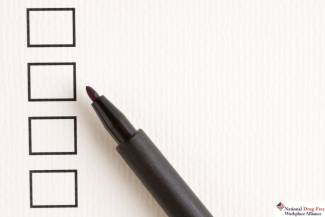Documenting Reasonable Suspicion

One of the most challenging responsibilities a supervisor or manager can face is dealing with an employee who may be under the influence at work. While no one enjoys confronting these situations, it's essential to handle them carefully, thoroughly, and in line with your organization's already established policies. At the heart of that process is documentation—accurate, objective, and timely.
So what kind of documentation should supervisors actually be keeping when reasonable suspicion arises?
First and foremost, it starts with observation. Not assumptions. Not gut feelings. Concrete, observable signs. This might include physical indicators like unsteady walking, slurred speech, or the smell of alcohol or drugs. Maybe an employee is acting erratically—sudden mood swings, inappropriate laughter, or extreme fatigue. These are the kinds of behaviors that need to be noted, factually and without judgment. Think: “The employee’s speech was slow and slurred, and they appeared confused when asked simple questions” rather than “The employee seemed high.”
Equally important is noting when and how often these behaviors occurred. Time-stamping your observations helps establish a clear timeline and adds credibility to the report. What time did the behavior begin? How long did it last? Was there a change in the employee’s condition? The more specific and consistent you can be, the better.
Whenever possible, bring in another trained supervisor to observe the situation as well. Independent documentation from a second witness reinforces the integrity of your observations. Each person should make their notes separately before discussing what they saw together. This step adds a layer of fairness and protection—for the employee and for your organization.
If you speak to the employee about your concerns, that conversation should also be documented. What did the employee say in response? Did they offer an explanation, deny use, or appear confused? Their behavior during the conversation—whether calm, defensive, cooperative, or agitated—is also relevant.
And then, of course, comes the action. What is outlined in your drug-free workplace policy? Did you remove the employee from their duties? Arrange for transportation? Notify HR? Initiate a drug or alcohol test? Every step you take in response to your observations should be recorded. That includes details like the time of any testing, the location, and whether the employee complied. All of this becomes part of the larger record and could be referenced in future HR or legal proceedings.
Thorough documentation isn't just about liability—it’s about fairness, consistency, and ensuring everyone in your workplace is treated with respect while also maintaining safety and compliance. It's not an accusation; it’s a record. And that distinction matters.
Using a clear, structured tool, like a Reasonable Suspicion Checklist, can make this process easier and ensure you don’t miss anything critical. Most importantly, it reinforces the fact that you’re acting based on observable facts, not personal feelings or assumptions.
At the end of the day, your role as a supervisor or manager is to act with integrity and clarity. The better your documentation, the better equipped you are to support your team, your policies, and a healthy, drug-free workplace.
Sources:
HR Acuity. (2024, November 27). Reasonable Suspicion Checklist | HR Acuity. https://www.hracuity.com/resources/templates/reasonable-suspicion-checklist/
When can employers require a drug or alcohol test? What’s the tea in L&E? (2024, December 11). JD Supra. https://www.jdsupra.com/legalnews/when-can-employers-require-a-drug-or-alc-04192/